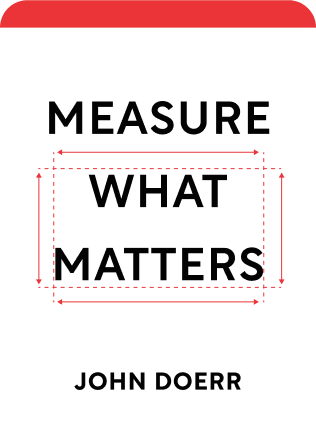
This article is an excerpt from the Shortform summary of "Measure What Matters" by John Doerr. Shortform has the world's best summaries of books you should be reading.
Like this article? Sign up for a free trial here .
How does OKR tracking work? How can you pick the best ways to track your OKRs?
OKR tracking is the process of setting, maintaining, and evaluating your OKRs from start to finish. OKR tracking involves several phases, and it’s important to set up the most effective OKRs possible to make this process effective.
Read more about OKR tracking and how it works below.
How to Implement OKR Tracking
Unlike traditional business goals, OKRs aren’t set in stone. OKRs are “living, breathing organisms,” and there are three phases to tracking an OKR’s life cycle: setup, midlife tracking, and wrap-up.
The Setup Phase for OKR Tracking
The first phase of OKR tracking is the setup phase. The setup phase is when you decide what cloud-based system you’ll use to track your OKRs, determine the length of your OKR cycles, and designate your “OKR shepherd.” Refer to “Checklist: Focus and Commit” in Chapter 4. All of these actions will make tracking possible in the next phase.
The Midlife Tracking Phase for OKR Tracking
Next in OKR tracking is the midlife tracking phase. Studies show that people are motivated by tangible signs of their progress toward a goal, and that making progress can be more motivating than receiving a bonus, receiving public recognition, or even achieving the goal itself.
But for progress to be motivating, people need to see it. This is why midlife check-ins are so important. During this phase, employees check-in with their managers to discuss their OKR progress.
Ideally, check-ins happen weekly, monthly, quarterly, and annually. The frequency of these check-ins will depend on the length of time needed to achieve each key result, the quality of communication in the team, the size of the group, how geographically spread out it is, and current business needs. In addition to one-on-one meetings with employees and managers, teams and departments should meet regularly to evaluate progress toward objectives they share.
4 Mid-Cycle OKR Options
At these check-ins, you and your manager check progress toward the OKRs, identify obstacles and potential obstacles, and refine key results. Discuss four options relative to each goal and track OKRs.
Option #1: Continue the objective or key result—If everything’s going well and you’re making progress, keep going.
Option #2: Revise the objective or key result—If changes in your environment or workflow have caused the goal to get off track, update it. You may need to alter your process or the goal’s timeline to get it back on track. You also may need to put other goals on the backburner so you have more time and resources to focus on this one.
Option #3: Start a new objective or key result—As conditions change, you may find you need to add new goals. If you already have five objectives, you may need to put one or two on the backburner to make room for the new goal.
Option #4: Stop an objective or key result—Some goals become irrelevant or impractical. Don’t stubbornly cling to a goal just because you set it. If it no longer serves your larger purpose or the company’s, toss it.
The Wrap-Up Phase
The wrap-up phase usually happens at the end of the OKR cycle. During this phase, you analyze your methods, evaluate your progress, and reflect on your successes and failures. The wrap-up phase consists of three parts: objective scoring, subjective self-assessment, and reflection.
Objective Scoring
The employee and manager assign a score to the objectives. The simplest way to score an objective is to average the completion rates of its key results.
At Intel, employees use a scale of 0.0 to 1.0 to score key results based on how much of the key result was completed.
- 0.7-1.0 is a “green” score, meaning the individual or team achieved the goal.
- 0.4-0.6 is a “yellow” score, meaning the individual or team made progress but didn’t complete the goal.
- 0.0-0.3 is a “red” score, meaning the individual or team failed to make progress toward the goal.
If you’ve defined key metrics well, they’ll be quantitative and can easily be scored. Say your key metric was to find 10 new prospective clients; if you found only 7, your score would be a 0.7.
At times, you may find that you made zero progress on a task due to delays or complications. That key result would earn a score of 0.
Subjective Self-Assessment
Objective data are important, but they don’t always tell the whole story. Low numbers could conceal a strong effort, and strong numbers could be inflated. Keep this in mind when you track OKRs.
For example, let’s say your objective is to recruit more customers, and one of your key results is to make 50 phone calls to potential customers. You end up making 35 phone calls, for an objective score of 0.7. On paper, this looks like a success. But if you waited until the last minute and rushed through your calls, signing only 1 new customer, the objective score of 0.7 isn’t truly indicative of your performance.
For this reason, it’s important to balance objective scores with subjective self-assessments. Work with your manager to compare objective scores with the circumstances that led to them. Let’s look at how this plays out in a few scenarios with the same key result:
Key Result: Acquire 10 new customers.
Objective Score: 0.7 (acquired 7 new customers)
Subjective Self-Assessment: The market slump made this a lot harder to achieve than I expected. Therefore, 7 new customers is an exceptional result.
Subjective Score: 0.9
Key Result: Acquire 10 new customers.
Objective Score: 1.0 (acquired 10 new customers)
Subjective Self-Assessment: I met this goal after only eight weeks, meaning that I set the bar too low.
Subjective Score: 0.7
Key Result: Acquire 10 new customers.
Objective Score: 0.8 (acquired 8 new customers)
Subjective Self-Assessment: My strong results were more the result of luck than hard work—one new customer I signed brought five other new customers with her.
Subjective Score: 0.6
Key Result: Acquire 10 new customers.
Objective Score: 0.9 (acquired 9 new customers)
Subjective Self-Assessment: After signing them, I realized only 2 of the 9 new customers would bring in significant revenue.
Subjective Score: 0.5
For employees who are too harsh or too lenient in their subjective self-assessments, you as the manager need to help recalibrate these subjective scores through dialogue about how to arrive at them. These one-on-one and team discussions are often more valuable than the scores themselves.
Reflection
Now that you know how to track OKRs, you can take time to reflect. To learn from your experiences and scores, use these questions as a jumping-off point for group discussion and self-reflection:
- Did you meet your objectives? If you did, what factors helped you be successful? If you didn’t, what roadblocks did you face?
- For the goals you achieved, would you change anything about how you met them? What would you change?
- What have you learned that you want to keep in mind during the next OKR cycle?
Don’t forget to celebrate your progress and accomplishments at this stage. Celebrating success boosts morale and keeps you and your team motivated.
Now that you’ve gotten a thorough understanding of OKR tracking, you can work on developing OKRs and your tracking system.

———End of Preview———
Like what you just read? Read the rest of the world's best summary of John Doerr's "Measure What Matters" at Shortform .
Here's what you'll find in our full Measure What Matters summary :
- How Google uses OKRs to rally 100,000 employees in the right direction
- How to avoid setting useless OKRs, and how to set great ones
- Key subtle behaviors your team must master to make OKRs work






